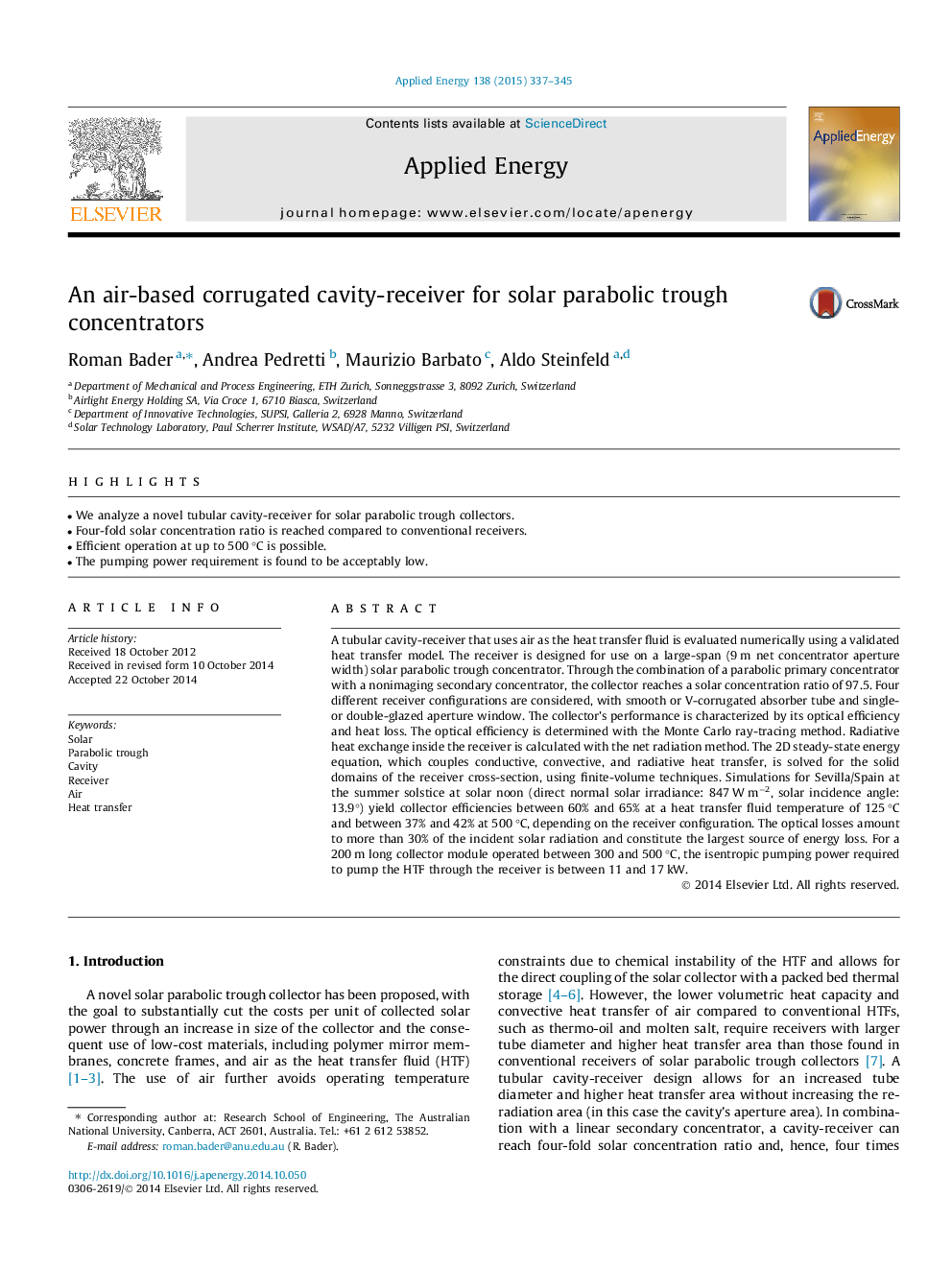| کد مقاله | کد نشریه | سال انتشار | مقاله انگلیسی | نسخه تمام متن |
|---|---|---|---|---|
| 6688269 | 501886 | 2015 | 9 صفحه PDF | دانلود رایگان |
عنوان انگلیسی مقاله ISI
An air-based corrugated cavity-receiver for solar parabolic trough concentrators
ترجمه فارسی عنوان
یک حفره موج دار مبتنی بر هوا برای غلظت های غول پابلیک خورشیدی
دانلود مقاله + سفارش ترجمه
دانلود مقاله ISI انگلیسی
رایگان برای ایرانیان
کلمات کلیدی
خورشیدی، کاشت پارابولیک، حفره، گیرنده، هوا، انتقال گرما،
موضوعات مرتبط
مهندسی و علوم پایه
مهندسی انرژی
مهندسی انرژی و فناوری های برق
چکیده انگلیسی
A tubular cavity-receiver that uses air as the heat transfer fluid is evaluated numerically using a validated heat transfer model. The receiver is designed for use on a large-span (9 m net concentrator aperture width) solar parabolic trough concentrator. Through the combination of a parabolic primary concentrator with a nonimaging secondary concentrator, the collector reaches a solar concentration ratio of 97.5. Four different receiver configurations are considered, with smooth or V-corrugated absorber tube and single- or double-glazed aperture window. The collector's performance is characterized by its optical efficiency and heat loss. The optical efficiency is determined with the Monte Carlo ray-tracing method. Radiative heat exchange inside the receiver is calculated with the net radiation method. The 2D steady-state energy equation, which couples conductive, convective, and radiative heat transfer, is solved for the solid domains of the receiver cross-section, using finite-volume techniques. Simulations for Sevilla/Spain at the summer solstice at solar noon (direct normal solar irradiance: 847 W mâ2, solar incidence angle: 13.9°) yield collector efficiencies between 60% and 65% at a heat transfer fluid temperature of 125 °C and between 37% and 42% at 500 °C, depending on the receiver configuration. The optical losses amount to more than 30% of the incident solar radiation and constitute the largest source of energy loss. For a 200 m long collector module operated between 300 and 500 °C, the isentropic pumping power required to pump the HTF through the receiver is between 11 and 17 kW.
ناشر
Database: Elsevier - ScienceDirect (ساینس دایرکت)
Journal: Applied Energy - Volume 138, 15 January 2015, Pages 337-345
Journal: Applied Energy - Volume 138, 15 January 2015, Pages 337-345
نویسندگان
Roman Bader, Andrea Pedretti, Maurizio Barbato, Aldo Steinfeld,
